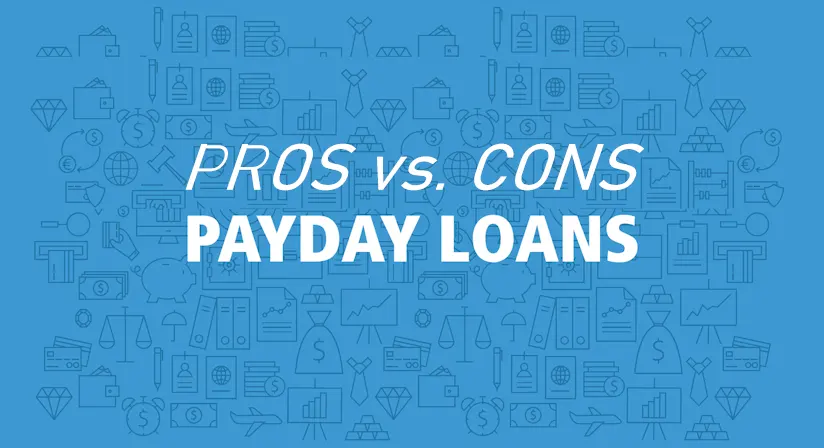July 31st, 2025
While payday loans are often criticized for their high interest rates and potential to trap borrowers in cycles of debt, there are creative approaches to using them responsibly or exploring alternatives that can address short-term financial needs.
One innovative strategy is to use a payday loan as a bridge while simultaneously pursuing a longer-term financial solution, such as negotiating with creditors for temporary relief or seeking a personal loan with better terms from a credit union.
To mitigate the risks associated with payday loans, consider leveraging a peer-to-peer lending platform where you might secure funds at more favorable rates by borrowing directly from individuals rather than traditional lenders.
Another approach is to explore credit card cash advances if your credit card offers a lower interest rate compared to payday loans, and you have a plan to repay the advance quickly.
Additionally, setting up a short-term emergency fund in advance can prevent the need for payday loans in the first place.
By building a small savings cushion and exploring these creative options, you can better manage unexpected expenses without falling into the high-cost pitfalls of payday lending.
The Benefits and Risks of Payday Loans: What You Need to Know
Payday loans are short-term, high-cost loans typically used to cover urgent expenses until the next paycheck.
While they can provide quick access to cash, it’s crucial to understand both their benefits and risks to make informed financial decisions.
Benefits of Payday Loans
- Immediate Access to Cash: One of the main advantages of payday loans is their rapid approval process. If you need money quickly to cover an unexpected expense—such as a medical bill or car repair—payday loans can provide funds often within a day or even a few hours.
- Minimal Qualification Requirements: Payday loans are usually easier to obtain than traditional loans because they have less stringent credit requirements. As long as you have a steady income and a bank account, you may qualify for a payday loan, even if you have a poor credit history.
- No Need for Collateral: Unlike secured loans, payday loans do not require collateral. You can access funds based on your next paycheck, making them appealing for those who don’t have assets to pledge.
Risks of Payday Loans
- High Interest Rates and Fees: Payday loans are infamous for their exorbitant interest rates and fees. The annual percentage rate (APR) on payday loans can exceed 400%, making them one of the most expensive forms of borrowing. For example, a $500 payday loan might come with a fee of $75, which can quickly accumulate if not repaid on time.
- Short Repayment Terms: Payday loans typically require repayment on your next payday, which can be as soon as two weeks from the date of the loan. This short timeframe can be challenging for borrowers who struggle to repay the loan in full, leading to additional fees and a cycle of debt.
- Potential for Debt Trap: The high costs and short repayment periods can lead to a debt trap, where borrowers take out new loans to repay the old ones. This cycle can be difficult to break and can lead to severe financial strain and worsening credit conditions.
What You Need to Know
Before taking out a payday loan, carefully evaluate your financial situation and consider whether you have alternative options.
For instance, exploring a personal loan from a credit union or a credit card cash advance may offer more favorable terms and lower interest rates.
Also, budgeting for emergencies and building a small emergency fund can help you avoid the need for payday loans in the future.
If you do decide to use a payday loan, ensure you fully understand the terms and fees, and make a plan to repay the loan promptly to minimize the risk of falling into a debt cycle.

Financial Health of a Community
While abandoned houses and vacant shopping centers are clear indicators of economic trouble, a more subtle sign of financial strain is the prevalence of payday lenders.
These businesses cater to individuals who are struggling financially, offering small personal loans at exorbitant interest rates.
A 2015 study by the Pew Charitable Trusts revealed that approximately 12 million Americans take out payday loans each year, spending around $7 billion on fees.
Although these rates are often framed as fees rather than interest, they effectively translate to annual percentage rates (APR) ranging from 300% to 500%.
In stark contrast, credit cards typically have APRs of 15% to 30%, and personal loans from banks or credit unions generally range from 10% to 25%. This makes payday loans a costly alternative.
Pew’s research shows that the typical payday loan borrower is often a working individual earning at least $30,000 annually.
These lenders specifically target people who are financially strained and may not qualify for traditional credit cards or who have very low credit limits due to previous financial issues.
While those with conventional credit can use their credit cards to manage short-term expenses, individuals without access to such credit might turn to payday loans to cover urgent needs, like rent or utility bills.
Unfortunately, the high-interest payments on payday loans often leave borrowers in a worse financial situation, perpetuating their cycle of debt.

Payday Loans Analyzed
Payday loans are short-term, unsecured cash advances that typically involve borrowing small amounts of money, often less than $1,000.
These loans come with very high interest rates and are expected to be repaid quickly, usually by the borrower’s next payday.
For example, a typical payday loan might be $500, which borrowers often use to cover urgent expenses like rent, utilities, food, or medical bills.
Although payday loans are named for their alignment with a borrower’s paycheck cycle, lenders might approve loans based on the borrower’s overall ability to repay, even if the loan is not directly tied to their next paycheck.
In the United States, payday loan establishments are commonly found in low-income neighborhoods, where residents often have limited access to traditional banking services.
These borrowers typically have poor credit and no other viable options for securing funds to address immediate financial needs.
Payday lenders employ various methods to determine interest rates, which can result in annualized rates of nearly 400%.
For instance, a $500 payday loan might come with a fee of $75, which, when annualized, equates to an APR of around 400%.
Despite the high costs associated with payday loans, default rates are generally lower than one might expect, which may be attributed to borrowers’ efforts to repay these loans promptly to avoid additional fees.
However, many states have introduced regulations to cap payday loan interest rates, leading some lenders to withdraw from those states due to reduced profitability.
This regulatory landscape is intended to protect consumers from exorbitant interest charges and to curb the negative financial impact of payday lending.

Payday loan regulations vary significantly from state to state
Payday loan regulations vary significantly from state to state in the U.S., reflecting a diverse approach to managing the risks associated with high-interest short-term loans.
Here’s an overview of how these regulations differ across various states:
1. Interest Rate Caps
Many states impose strict caps on the interest rates that payday lenders can charge. For example:
- California: Payday loans are limited to a maximum fee of $15 per $100 borrowed, which translates to an APR of around 460%.
- New York: Payday loans are illegal, reflecting the state’s strict stance against high-cost lending practices.
- Texas: The maximum fee for a payday loan is $20 per $100, which equates to an APR of approximately 660%.
2. Loan Amount Limits
States also vary in terms of the maximum loan amount permitted:
- Oklahoma: Allows payday loans up to $500.
- Missouri: Permits payday loans up to $1,000.
- Georgia: Prohibits payday loans altogether, but has a strong alternative in the form of credit unions offering small-dollar loans.
3. Repayment Terms
Regulations on how long borrowers have to repay their payday loans can differ:
- Ohio: Allows payday loans with terms of up to 60 days.
- Nevada: Requires payday loans to be repaid within 35 days.
- Alabama: Payday loans must be repaid within 30 days, which can lead to very short repayment periods.
4. Rollovers and Extensions
The practice of allowing borrowers to roll over or extend their payday loans is regulated differently:
- Indiana: Allows rollovers with additional fees, potentially leading to extended repayment terms and higher total costs.
- Michigan: Prohibits rollovers but permits loan extensions under certain conditions.
- Washington: Limits the number of rollovers to four, aiming to curb long-term debt cycles.
5. Regulatory Oversight and Licensing
States vary in the degree of regulatory oversight and licensing requirements:
- Colorado: Requires payday lenders to be licensed and mandates that they provide borrowers with detailed information about loan costs and repayment terms.
- South Carolina: Has minimal regulation, which has led to high-interest rates and less borrower protection.
- Virginia: Requires lenders to be licensed and sets specific requirements for loan terms and fees.
6. Consumer Protections
Some states have implemented additional consumer protections:
- New Hampshire: Provides a cooling-off period during which borrowers can cancel a loan and receive a refund of any fees paid.
- North Carolina: Outlaws payday lending entirely but offers alternatives like small-dollar loans through local credit unions.
- Washington D.C.: Imposes a 24% APR cap on payday loans and limits fees to prevent excessive borrowing costs.
These variations highlight the patchwork nature of payday loan regulation across the U.S.
While some states offer strong protections to limit the impact of high-cost borrowing, others provide fewer safeguards, which can lead to financial challenges for borrowers.
Always check local laws and regulations to understand the specific rules governing payday loans in your state.Payday Loans Regulations Vary from State to State
--- article sharing ---
